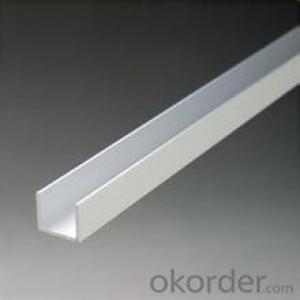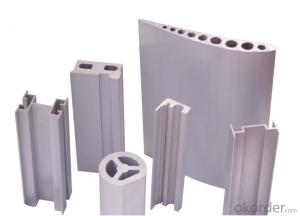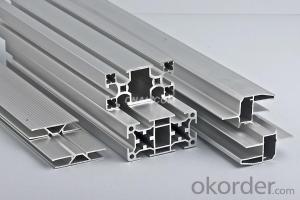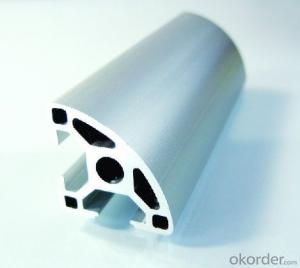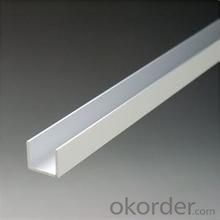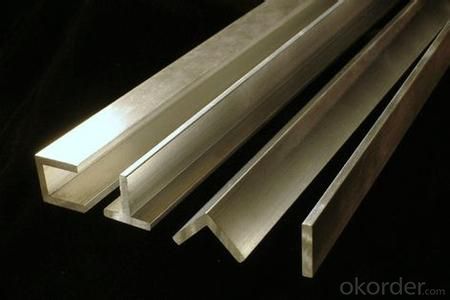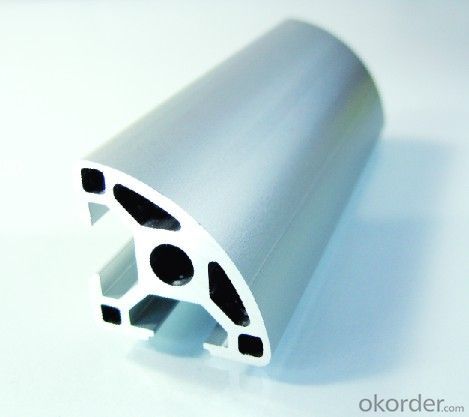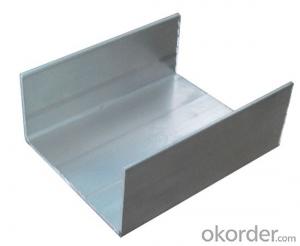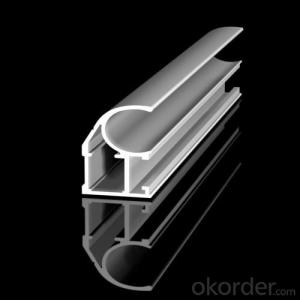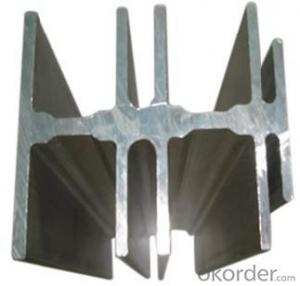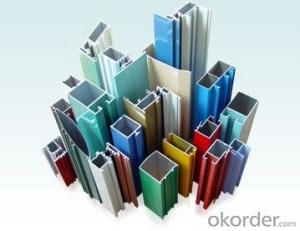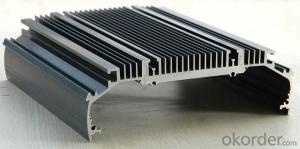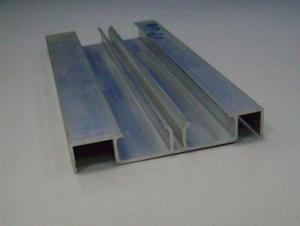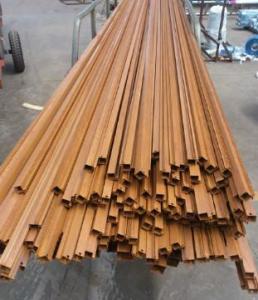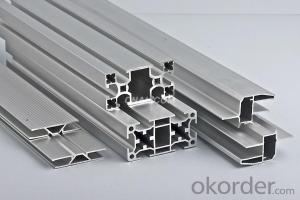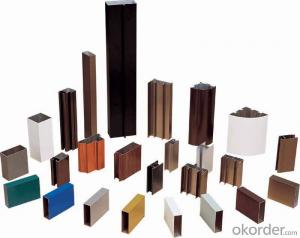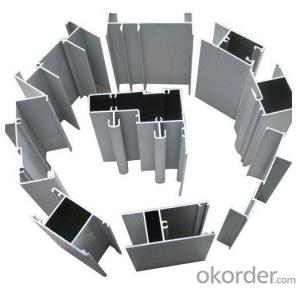Aluminum Extrusion Profiles Philippines - Various Surface Treatment Grade Top Industrial Aluminium Profile Extrusion
OKorder Service Pledge
OKorder Financial Service
You Might Also Like
Aluminium is a relatively soft, durable, lightweight, ductileand malleablemetalwith appearance ranging from silvery to dull gray, depending on the surfaceroughness. It is nonmagnetic and does not easily ignite. A fresh film ofaluminium serves as a good reflector (approximately 92%) of visible lightand an excellent reflector (as much as 98%) of medium and far infraredradiation. The yield strength of pure aluminium is 7–11 MPa,while aluminium alloys have yield strengths ranging from200 MPa to 600 MPa. Aluminium has about one-third the densityand stiffness of steel. It is easily machined,cast, drawn and extruded.
Features:
Material | Alloy 6063,6061,6005or according to customer’s choice |
Temper | T3, T4, T5, T6 |
Surface | Anodize, electrophoresis, powder coating, PVDF coating, wood grain painting, matted, etc. |
Length | Coating 6.5 meters, Anodizing 6.5 meters, Mill finish 5 meters |
Application | Industrial, electrical equipment(TV set, air conditioner, refrigerator, computer), decoration,construction, transportation |
Custom Made | We can package following with customer's request. |
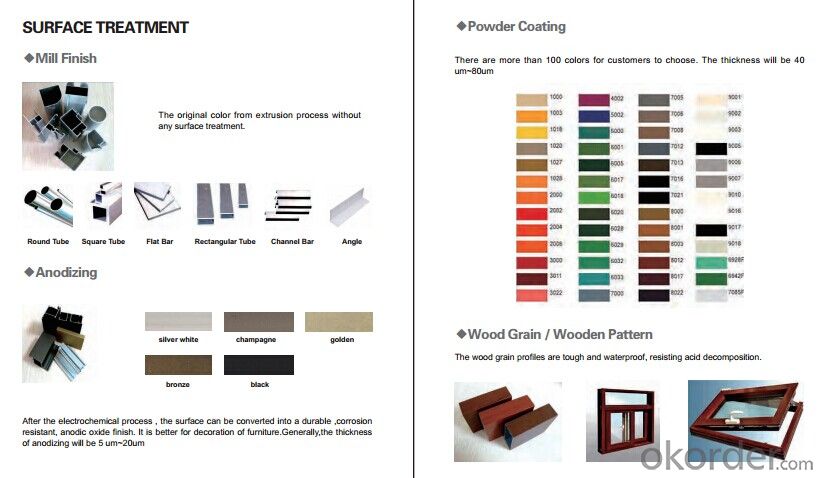



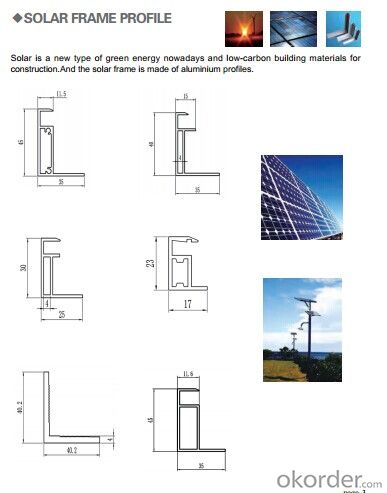
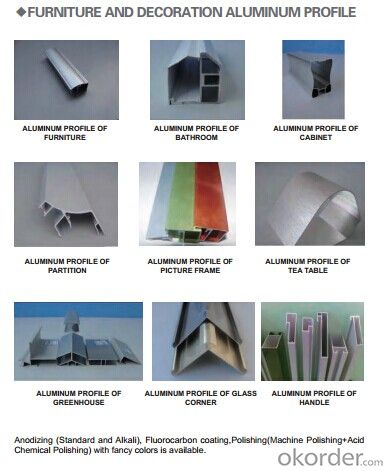
- Q: This question asks for a list of various types of aluminum profiles that are commonly used in the construction industry.
- <p>Aluminum profiles used in construction come in various types, each with specific applications. Common types include: 1. Extruded Profiles: These are the most common, formed by forcing aluminum through a die to create different shapes and sizes. 2. Structural Profiles: Used for structural integrity, such as beams and columns. 3. Decorative Profiles: For aesthetic purposes, like trims and moldings. 4. Industrial Profiles: Designed for specific industrial applications, like conveyor systems. 5. Window and Door Profiles: Specifically designed for window and door frames. 6. Heat Sink Profiles: Used for dissipating heat in electronic devices. 7. Railing Profiles: For constructing railings and balustrades. 8. Solar Profiles: Used in solar panel mounting systems. Each type has unique properties and is chosen based on the specific requirements of the construction project.</p>
- Q: What are the standard dimensions of aluminum profiles?
- The specific industry and application can cause the standard dimensions of aluminum profiles to vary. Nevertheless, there are commonly available standard dimensions. Aluminum profiles are generally offered in a range of shapes and sizes, such as rectangular, square, circular, and customized shapes. Rectangular aluminum profiles typically have widths between 1 inch and 6 inches, and heights between 1/2 inch and 4 inches. Square profiles often have widths and heights ranging from 1 inch to 4 inches. Circular aluminum profiles, also referred to as tubes or pipes, usually come in different outer diameters, ranging from 1/4 inch to 8 inches, with wall thicknesses varying from 1/16 inch to 1/2 inch. It is important to note that these dimensions are general standards, and there may be variations depending on the manufacturer and specific project requirements. Additionally, custom dimensions can be manufactured to meet unique specifications. To ensure the chosen dimensions can adequately support the intended use, it is crucial to consider the intended application and load-bearing requirements when selecting aluminum profiles.
- Q: Is it possible to utilize recycled aluminum products as an alternative to new ones to decrease environmental impact and save costs?
- <p>Yes, using recycled aluminum products is an effective way to reduce environmental impact and cost. Recycling aluminum requires significantly less energy compared to producing new aluminum from raw materials, which reduces greenhouse gas emissions. Additionally, recycled aluminum retains the same properties as new aluminum, making it a viable alternative for many applications. This practice not only conserves resources but also lowers production costs, making it a sustainable choice for both the environment and your budget.</p>
- Q: Are aluminum profiles suitable for material handling equipment?
- Material handling equipment can benefit greatly from the use of aluminum profiles. These profiles offer numerous advantages that make them an excellent choice for such applications. To begin with, aluminum is both lightweight and strong, making it easy to handle and transport materials. This is particularly advantageous for equipment that requires frequent maneuvering or transportation. Furthermore, aluminum profiles possess remarkable corrosion resistance properties, rendering them suitable for both indoor and outdoor material handling tasks. This durability ensures that the equipment can withstand harsh environments and maintain its structural integrity over time. In addition, aluminum profiles can be easily customized and assembled to create a wide range of material handling equipment, including carts, conveyors, and shelving systems. The versatility of these profiles allows for flexibility in design and adaptability to various material handling requirements. Moreover, aluminum is a sustainable material as it can be fully recycled. Opting for aluminum profiles for material handling equipment aligns with environmentally friendly practices and helps reduce the carbon footprint. In conclusion, aluminum profiles are indeed well-suited for material handling equipment due to their lightweight yet strong nature, corrosion resistance, design versatility, and sustainability.
- Q: the middle of the following is a groove structure, as if you can not bolt hole, then how to install the rail on it? What's the use of flat sealing strips and slip bars embedded inside? Is it necessary to mount the guide rail on the aluminum profile, you can choose more than 6060 of the profiles, the middle is flat structure, and then drill holes in the bolt connection rail Thanks
- Use the T nuts (in the T groove) to fit the rail! Flat sealing strips and slip bars are embedded inside for dust proof, waterproof, oil proof and so on!!!Satisfaction, please adopt
- Q: This question asks for guidance on selecting a trustworthy supplier of aluminum profiles used in construction.
- <p>To choose a reliable supplier of aluminum profiles for building construction, consider the following: Check their industry reputation and customer reviews. Ensure they have the necessary certifications and quality standards compliance. Evaluate their product range and quality, comparing different suppliers' offerings. Assess their delivery times and reliability. Consider their after-sales service and warranty provisions. Finally, get quotes from multiple suppliers and compare prices while ensuring quality is not compromised.</p>
- Q: Can aluminum profiles be used for soundproofing or acoustic applications?
- Yes, aluminum profiles can be used for soundproofing or acoustic applications. Aluminum is known for its excellent sound-dampening properties, making it an ideal material for creating sound barriers or enclosures. Its structural rigidity and ability to absorb or reflect sound waves can effectively reduce noise transmission. Additionally, aluminum profiles can be easily customized and fabricated into different shapes and sizes to suit specific acoustic requirements. Whether used in walls, partitions, doors, or enclosures, aluminum profiles can help minimize the transfer of sound, providing a quieter and more comfortable environment.
- Q: Can aluminum profiles be used in the production of consumer electronics?
- Yes, aluminum profiles can be used in the production of consumer electronics. Aluminum is a lightweight and durable material that offers excellent heat dissipation properties, making it suitable for electronic devices that require efficient cooling. Additionally, aluminum profiles can be easily customized and integrated into various designs, providing flexibility for manufacturers in creating sleek and stylish consumer electronics products.
- Q: Are aluminum profiles suitable for use as exterior walls in high-rise buildings?
- <p>Yes, aluminum profiles can be used for exterior walls in high-rise buildings. They offer several advantages such as high strength, low weight, corrosion resistance, and ease of maintenance. Aluminum profiles are also known for their durability and sustainability, making them an excellent choice for modern architecture. They can be used in various applications, including curtain walls, window frames, and structural components, due to their versatility and adaptability to different design requirements.</p>
- Q: What are the advantages of using aluminum profiles in the railway industry?
- There are several advantages of using aluminum profiles in the railway industry. Firstly, aluminum is lightweight yet durable, which helps reduce the overall weight of the train and improve fuel efficiency. Secondly, aluminum profiles offer excellent corrosion resistance, ensuring the longevity and low maintenance of the railway components. Additionally, aluminum profiles are highly recyclable, making them environmentally friendly. Moreover, aluminum's excellent thermal conductivity allows for efficient heat dissipation, ensuring the safety and performance of electrical systems in the railway industry. Lastly, aluminum profiles offer design flexibility, making it easier to create complex shapes and structures, ultimately enhancing the aesthetics and functionality of railway components.
Send your message to us
Aluminum Extrusion Profiles Philippines - Various Surface Treatment Grade Top Industrial Aluminium Profile Extrusion
OKorder Service Pledge
OKorder Financial Service
Similar products
Hot products
Hot Searches
Related keywords

